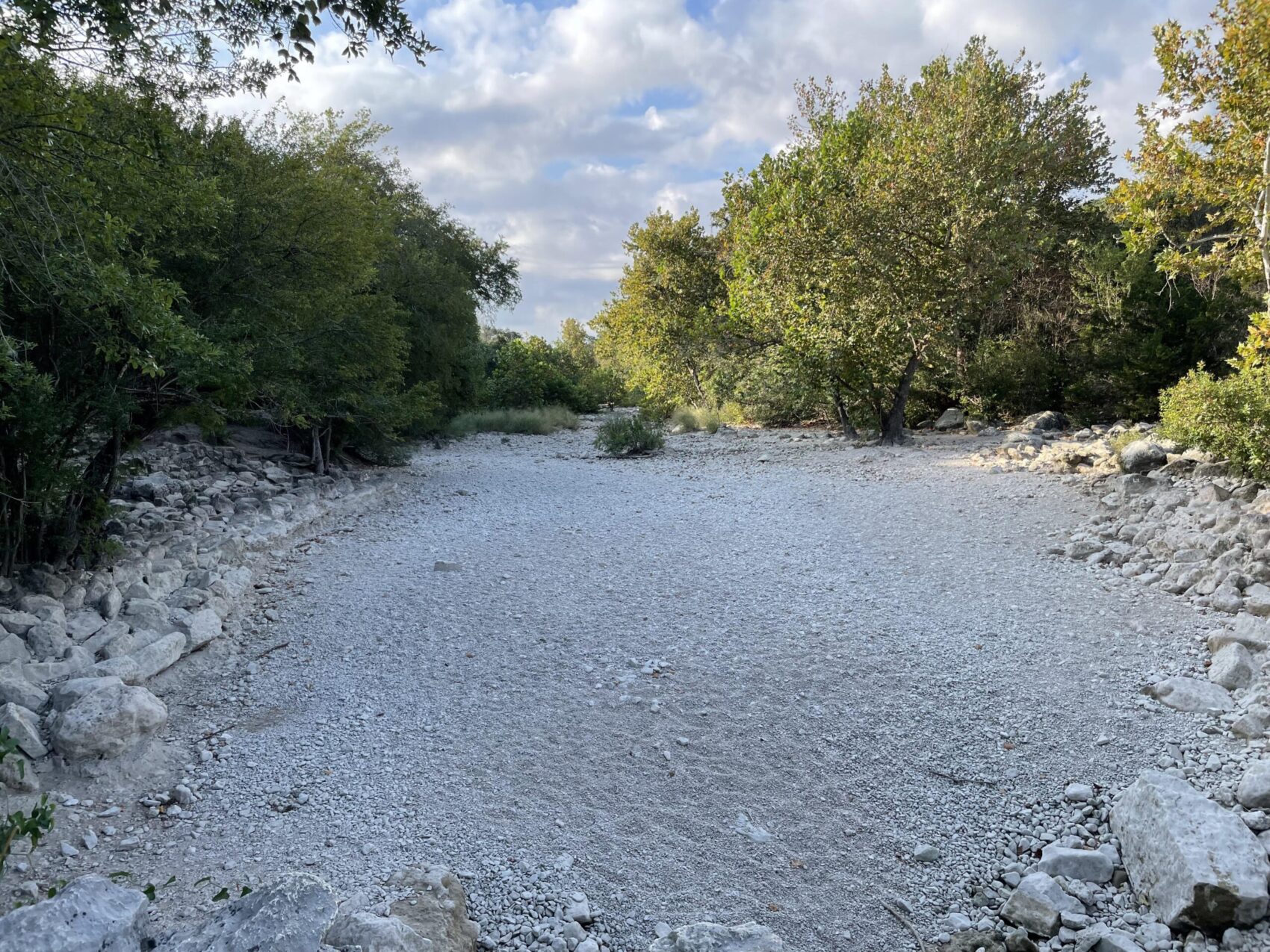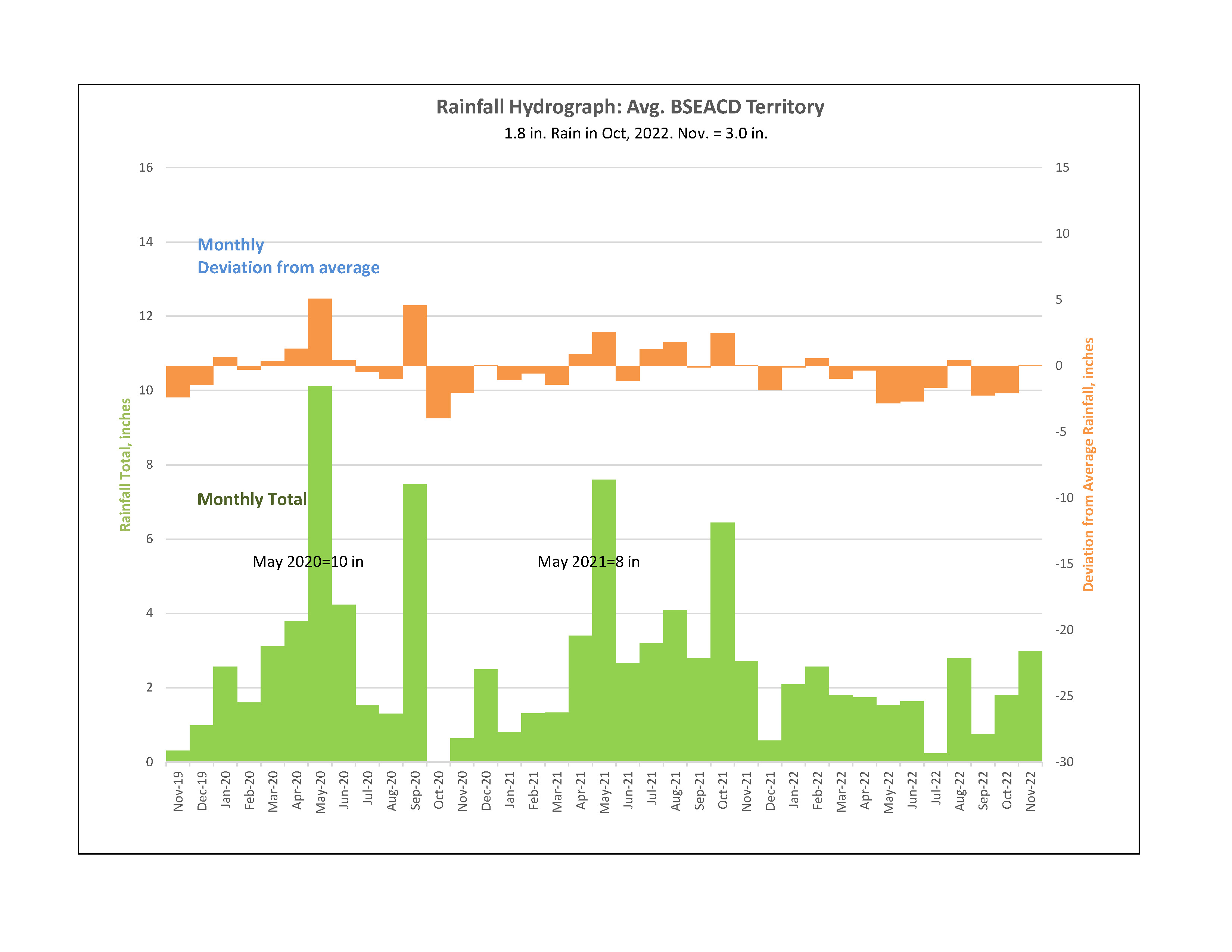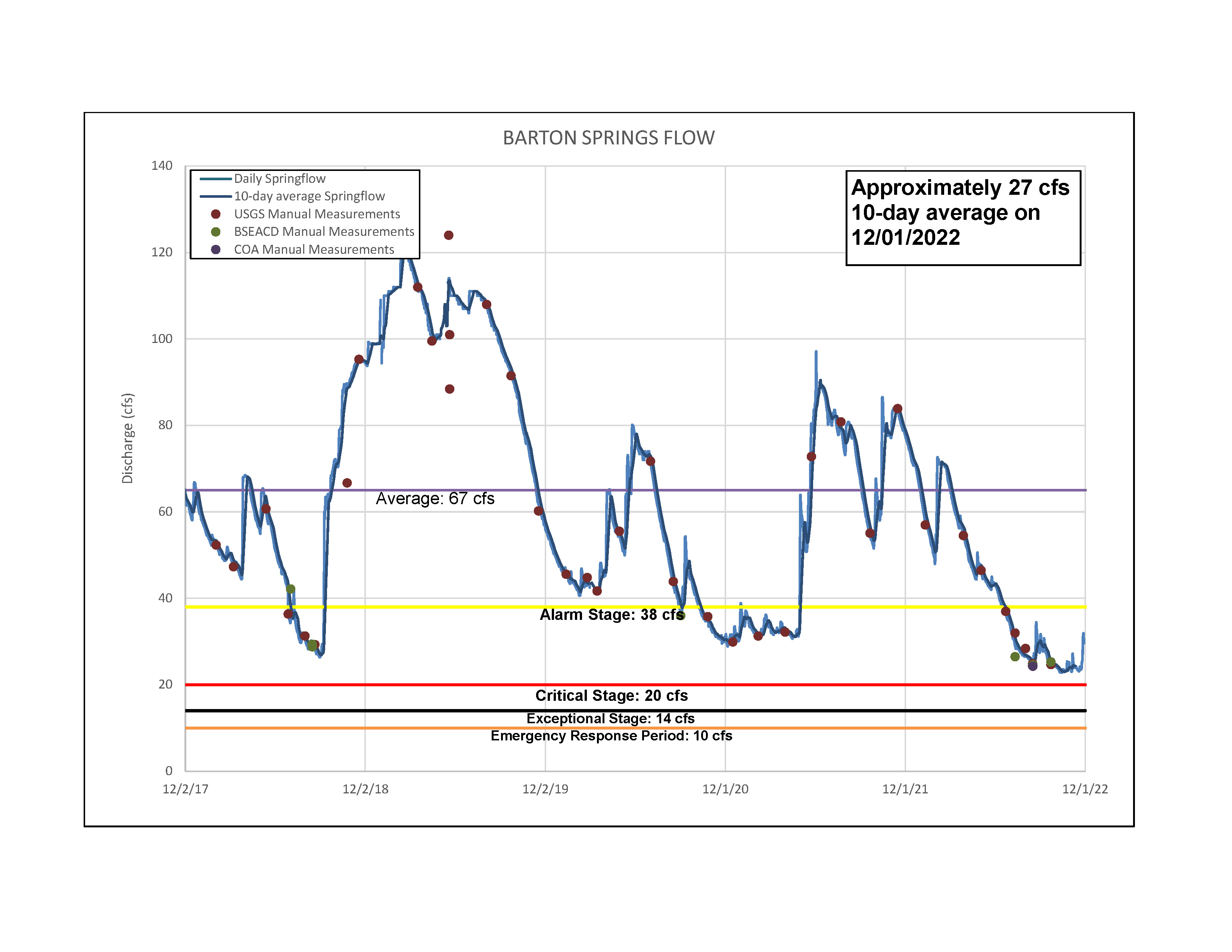|
Drought Update November 30, 2022 The District remains in Critical Drought (Stage III) since it was officially declared by General Manager Tim Loftus on October 20, 2022. One of the District’s drought triggers, Lovelady Monitor Well, passed below its Critical Drought (Stage III) trigger on October 17, 2022. Following the lead of the hottest and driest summer months, October in the Hill Country started off much warmer and drier than usual. It wasn’t until Oct. 16 that the area recorded its first dose of measurable rain, breaking a 38-day dry stretch. October provided an average of 1.8 inches across the District, but came up short of its historical monthly average of 3.9 inches. November has delivered an average of 3.0 inches of rainfall across the District, joining only February and August in reaching its historical monthly average. While this welcomed rain, especially over an inch the day after Thanksgiving, provided a good ground soaking, it contributed very little flow to area creeks like Onion, Bear and Barton and little to no aquifer recharge. Surface vegetation has received some relief, but aquifer drought conditions in the Texas Hill Country continue to worsen. We have received 20 inches – 12 inches behind annual average rainfall – from January through November (figure 1). |
|
|
Climate scientists forecast that La Niña conditions (declared by NOAA on 10/14/21) are favored to continue into winter. The continuation of below-average rainfall and above-average heat indicate we’ll finish 2022 well below average and are in for a dry spring 2023. It’s not until February 2023 that forecasters predict a chance of neutral conditions and increasing chances of returning Central Texas to average temperature and rainfall. As November comes to a close, so does the 2022 hurricane season (officially Nov. 30th) that has remained very quiet for Texas weather conditions. Local forecasters predict our next chance of rain following a fairly strong cold front arriving around December 5. As of November 30/December 1, the Lovelady well (figure 2) had a level of 461.3 ft msl, 1.4 ft below the trigger level for Stage III drought and about 4 ft above Stage IV Exceptional drought. Lovelady crossed under the Stage II trigger on May 26 and under Stage III on October 17. |
|
|
Also as of November 30/December 1, Barton Springs (figure 3) was flowing at 26 cfs (10-day average), 12 cfs below the Stage 2 drought trigger point of 38 cfs. The Stage III trigger is 20 cfs. Barton Springs crossed under the Stage II drought trigger in late June and could cross into Stage III in late December or January if we receive no more rain. |
|
|
To summarize, the Austin/Hill Country area has received an average 20 inches of rainfall so far in 2022 (through November 17), 12 inches below the annual average. Forecasted below-average rainfall with persistent La Niña conditions indicate we’ll finish 2022 well below average and are in for a dry spring 2023. Conservation remains critical if we hope to be resilient through this significant period of Central Texas drought. Planting native or drought-tolerant landscapes, mulching, and using compost can substantially reduce the amount of irrigation water required to keep plants healthy. Making sure your irrigation system is functioning at peak efficiency and replacing leaking gaskets and hoses can help conserve water. Installing a rain barrel or rainwater harvesting system can make an even bigger impact in reducing overall water use. The District recommends that both exempt and permitted well owners follow these conservation tips. For additional information on groundwater wells, please take a look at the District’s Well Owner Guide. If you have questions about your well, please contact us at 512-282-8441. We encourage you to call or visit our office (1124 Regal Row, Austin, TX) during office hours (8 a.m. to 5 p.m.) to review our groundwater management process, receive information about the drought, or if you need assistance with other groundwater related matters. Also, check out our drought information page for more on Critical Drought Restrictions (Stage III). We will frequently update this page. Other useful links: |
|
BSEACD is a groundwater conservation district charged by the Texas Legislature to preserve, conserve, and protect the aquifers and groundwater resources within its jurisdiction, which includes parts of three central Texas counties. It is governed by a Board of five elected directors and staffed with hydrogeologists, groundwater regulatory compliance specialists, environmental educators, geospatial systems specialists, and administrative support personnel. |




